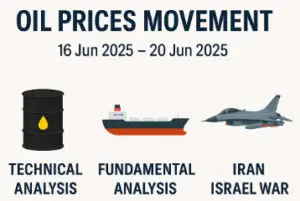✈️ F-14 Tomcat Fighter Jets Destroyed in Iran: What It Means for the Northrop Grumman Legacy and Market Impact
When two aging F-14 Tomcat fighter jets were destroyed in Israeli airstrikes on an Iranian base in June 2025, the images quickly circled the globe. While militarily insignificant, the incident triggered a wave of historical reflection, investor curiosity, and renewed conversations around the Northrop Grumman legacy—the company that once built these legendary aircraft.
Although the jets were old and out of service in the United States, their destruction still sparked reactions from military analysts, aviation historians, and market watchers. Here’s a comprehensive breakdown of how this symbolic event affects Northrop Grumman’s legacy, reputation, and even its financial standing.
🛫 F-14 Tomcat Fighter Jets: The Aircraft That Refused to Be Forgotten
The F-14 Tomcat fighter jets, first delivered to the U.S. Navy in the early 1970s, became icons of American airpower during the Cold War. Featuring swing-wing technology, twin engines, and advanced radar systems, these jets were built to dominate the skies.
Only one foreign nation received them: Iran. Before the 1979 revolution, 79 F-14s were delivered under a U.S.-approved military agreement. Since then, Iran has maintained a small fleet through reverse engineering and parts cannibalization.
💥 June 2025: What Happened in Iran?
On June 16, 2025, during ongoing conflict with Israel, Iranian state media confirmed the destruction of two F-14 Tomcat fighter jets parked at an airbase near Esfahan. These aircraft were likely non-operational but symbolically significant.
-
Strike Type: Precision airstrike by Israeli aircraft.
-
Target: Hardened shelters containing F-14s.
-
Result: Total destruction of both jets.
-
Reaction: Iran condemned the strikes but admitted the aircraft were not flight-ready.
Despite their non-operational status, the incident made global headlines—reigniting interest in the F-14 and the Northrop Grumman legacy.
🧭 The Northrop Grumman Legacy: Strengthened or Damaged?
Let’s break down how this event reflects on the Northrop Grumman legacy, both in the public eye and in historical context.
✅ Strengthened Legacy Through Endurance
-
The fact that F-14 Tomcat fighter jets remained in serviceable condition after five decades speaks volumes about Northrop Grumman’s engineering quality.
-
Defense experts applauded the aircraft’s longevity, calling them “mechanical marvels that outlived their generation.”
❌ Legacy Under Ethical Scrutiny
-
Activists and think tanks raised concerns about U.S.-built weapons still existing in enemy hands.
-
Some questioned the ethics of the original arms deal with Iran—even though it was legal and strategic at the time.
Despite the noise, the overall sentiment among aerospace analysts was that the Northrop Grumman legacy emerged with renewed strength—seen as a mark of durability and engineering excellence.
No — the Grumman Aircraft Engineering Corporation itself is not a currently listed company. It ceased to exist in April 1994, when it merged with Northrop Corporation to form Northrop Grumman (en.wikipedia.org).
Today, the legacy of Grumman lives on through Northrop Grumman Corporation, which is a publicly traded company on the New York Stock Exchange under the ticker NOC . It’s a major aerospace and defense contractor, consistently ranked among the Top 3 global defense firms, and a component of the S&P 500 (google.com).
🧾 Snapshot of Northrop Grumman (formerly Grumman):
-
Ticker symbol: NOC (NYSE) (marketwatch.com)
-
Headquarters: West Falls Church, Virginia, USA (en.wikipedia.org)
-
Business focus: Aerospace, defense systems, space technology and autonomous systems
📈 Current stock performance (as of June 18, 2025)
The stock closed at $494.65, marking a 1.85% decline on that day, and sits approximately 11% below its 52-week high (~$555.57 on October 1, 2024) (marketwatch.com).
📈 Market Reputation: A Surge in Historical Credibility
Although Northrop Grumman has long moved on to more advanced systems like the B-21 Raider and space defense tech, the media spotlight on the F-14 has had a ripple effect on brand awareness.
Public Sentiment:
-
Social media buzzed with nostalgia for the F-14, especially in aviation circles.
-
Search trends for “F-14 Tomcat fighter jets” surged globally, bringing new attention to Grumman’s history.
Investor Sentiment:
-
While the destruction had no material impact on current operations, Northrop Grumman’s brand gained symbolic value.
-
Investors were reminded of the company’s long-standing credibility in aerospace manufacturing.
In a world where defense reputation shapes market valuations, this unexpected media wave subtly reinforced the Northrop Grumman legacy in the minds of stakeholders.
💰 Financial Impact: Does It Affect the Bottom Line?
From a revenue standpoint, the answer is no. But that doesn’t mean there aren’t financial echoes.
No Direct Revenue Impact:
-
The F-14 Tomcat fighter jets have not been produced since the early 1990s.
-
Northrop Grumman earns revenue from cutting-edge systems like satellites, autonomous aircraft, cyber solutions, and stealth bombers.
Indirect Financial Impact:
-
Public interest in legacy systems can lead to greater interest in Northrop’s historical IP and museum licensing.
-
Enhanced brand visibility can translate into stronger institutional confidence, especially for long-term defense contracts.
So, while the bottom line remains untouched, the Northrop Grumman legacy continues to benefit in visibility and historical authority.
🌐 Global Military Narrative and Symbolism
The destruction of the F-14 Tomcat fighter jets in Iran became more than a military update—it became a metaphor.
-
In Iran: A blow to national pride; the F-14 symbolized prestige.
-
In Israel: A show of air superiority and deterrent precision.
-
Globally: A reminder of how far-reaching Cold War defense deals still are.
For Northrop Grumman, this serves as a powerful example of how legacy platforms shape political and emotional landscapes—even decades after retirement.
🧠 Final Thoughts: Legends Never Truly Die
The burning wreckage of the F-14 Tomcat fighter jets in Esfahan may have looked like an end—but in truth, it marked a new chapter in a story that began 50 years ago. These jets, once American marvels, became tools of survival for Iran, and now serve as relics of resilience.
For Northrop Grumman, the lesson is clear: when your engineering outlasts wars, generations, and politics, your legacy doesn’t just survive—it thrives.
The Northrop Grumman legacy is not defined by what was lost this month—it’s defined by what was built to last a lifetime.



